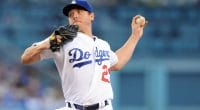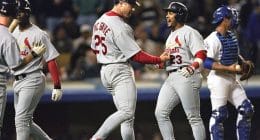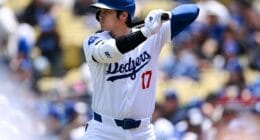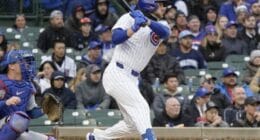Multiple injuries this season forced the Los Angeles Dodgers to search for options to plug into their starting rotation. Losing Clayton Kershaw to the disabled list prompted the club to acquire Bud Norris in a five-player trade with the Atlanta Braves.
After a series of rehab starts with High-A Rancho Cucamonga and one with Triple-A Oklahoma City, Brandon McCarthy approached the Dodgers with a proposition. “This is right where I wanted to be,” he said on the even of his 2016 debut.
“I was the one who said, ‘Let’s go.’ I felt like I had gotten to a place where I felt confident about being here. And if there was a need for me, I said they could put me in. I brought it up when we met a few days ago. I said listen, ‘If you guys are fine with it being time, I’m ready to go.'”
The start is McCarthy’s first in the Majors since facing the San Diego Padres at Petco Park on April 25, 2015. He was removed after five innings with tightness in his right elbow, which days later led to the decision to undergo Tommy John surgery.
While McCarthy admitted to there being some extra adrenaline and excitement, he’s aiming to keep the outing in perspective. “I don’t want it to be anything different than just a start. I understand there’s something to it but I’m trying not to place any mental importance on it,” he said.
“The same way any step in the throwing program was just another step along the way.” The 32 year old said he crossed the mental threshold after completing five innings in 105-degree weather in what wound up being his final rehab start. “I got through the game and realized I hadn’t even thought about my elbow,” McCarthy said.
“My focus was on pitch execution and getting people out. Once I got there, I felt like it had broken off and I wasn’t thinking about anything else but pitching.” However, that’s not to say McCarthy doesn’t expect to endure some ups and downs.
He finished with a 4.61 ERA over four rehab starts, but more important are velocity, command, and other indicators of pitcher who’s Major-League ready. McCarthy, at the very least, is on the doorstep.
“One of the things I knew I was done developing at the lower levels is I need big league hitters to tell me what I’m throwing right now and what I’m doing,” he said.
“You need Nolan Arenado to let you know, ‘Hey, your sinker sucks right now,’ or ‘Your stuff is where it is right now.’ It feels hard to say that, but I realize it’s good enough to compete. I need to find out what I need to refine, what needs to be tinkered with and what’s good enough.”
Dodgers manager Dave Roberts said there aren’t any limitations on McCarthy in his first start. Any comeback wouldn’t be complete without the guidance of the Dodgers’ medical staff, whom McCarthy was sure to give credit to in his returning within the originally set timeline.
“It’s more (a testament) to the training staff coming up with a program, getting me to stick to it, getting everything to go along without having any setbacks and keeping me sane,” he said. “For me, it was just doing the work everyday and getting through it.”





